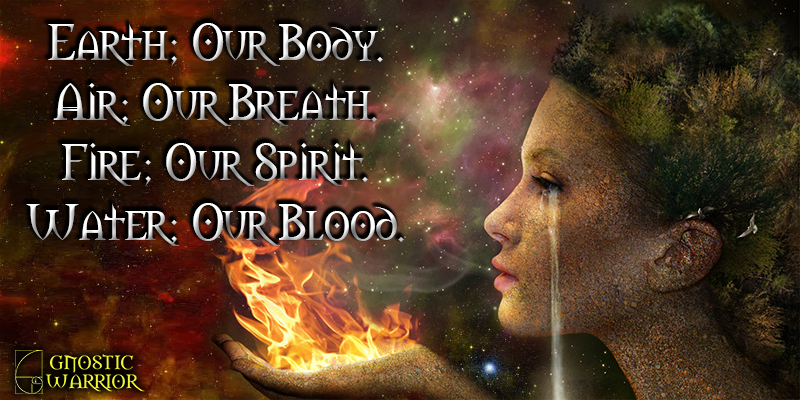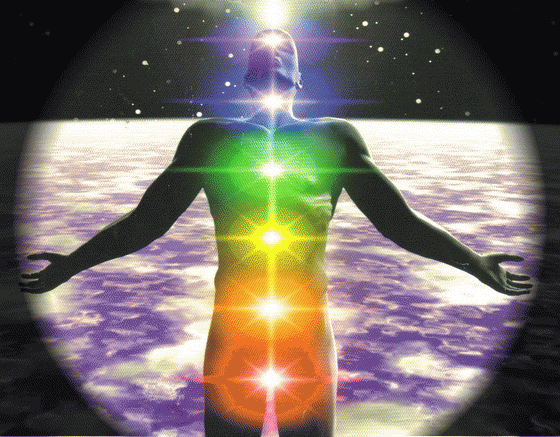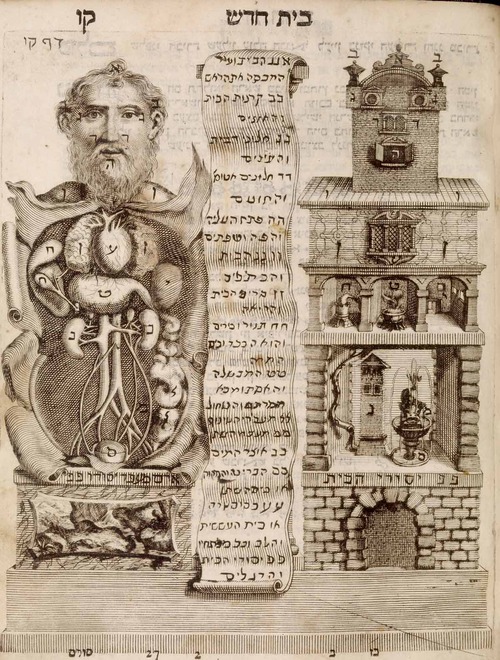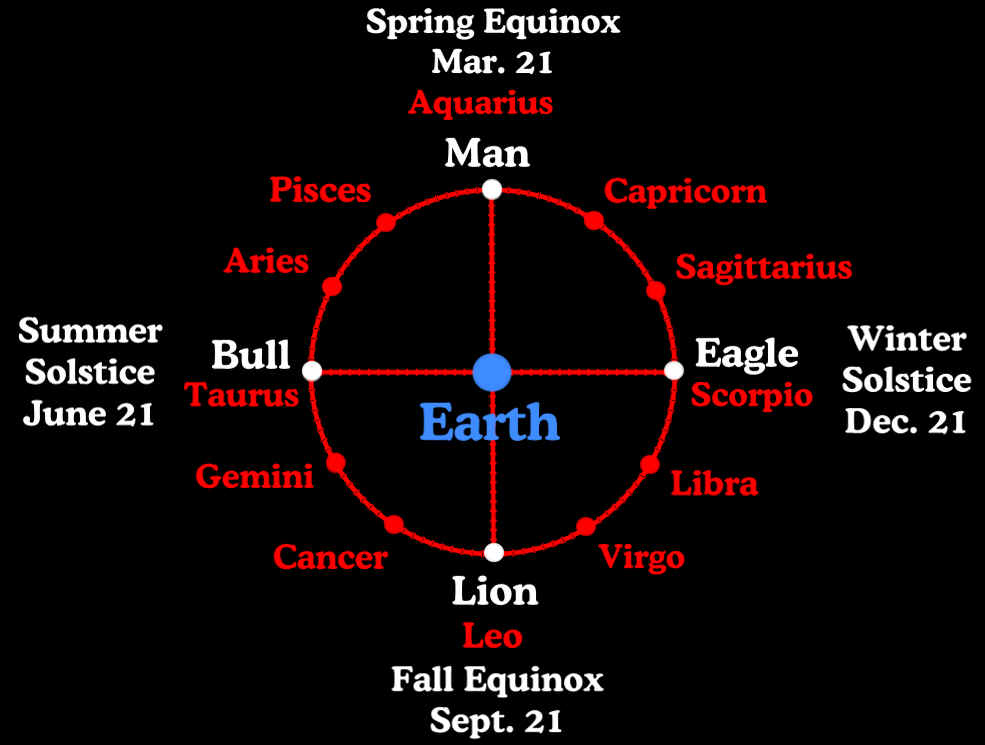The Etheric Body is one of the various names given to what has also been called by various esoteric authors as the Astral Body, Light Body, Body of Light, Human Energy Field, or Aura, which all mean the same thing and can be used interchangeably.
The etheric body is part of the human constitution in the form of light energy or luminous fluid. It is considered the energetic template of the physical body that has the ability to act as a mediator between the soul and body and can also record and store information.
The etheric body is made of a material known as ether (aether) that comes from the heavens (cosmos or space). In a similar sense, the term astral body refers to the stars. Very similar descriptions and words such as the light body and aura have been used throughout traditional history to modernity.
This mysterious and luminous material has been described as the light or energy field of the body to be both liquid and gaseous in nature. It is not visible to the naked eye, and some people claim that it can only be seen with spiritual sight or when it interacts with physical matter in some way (i.e., through magnetism).
As I researched this subject, I found that we can use modern science to identify what exactly the etheric body is and I can provide examples of my studies. In this article, I will detail the various aspects of its history with various quotes from people who have written on the subject and also the results of my research. I also believe today that we can witness, measure and record this phenomenon with magnetic image resonance machines, which I will explain in my next article on the Science of the Etheric Body.
The first people to write about and debate what aether was were the Ancient Greeks through the writings of various philosophers such as Plato, Aristotle, and Proclus. This tradition continued among many of the world’s greatest thinkers, such as Descartes, Paracelsues John Dee, Eliphas Levi, Issac Newton, Rudolph Steiner, Albert Einstein, and Nikola Tesla, who have all written and or debated about its existence.
As I explained in my previous essay, according to the Greeks, aether (Greek αἰθήρ, aithēr), also spelled ether, is the fifth element that fills the region of the universe above the terrestrial sphere. It is a type of heavenly fire, light, or luminous substance that is always in motion. But they claimed that it is not to be compared to real fire, and is distinct from the other four classical elements (Platonic Solids), Earth, Water, Air, and Fire.
Both Plato and Aristotle also referred to ether as “Idea” (Greek ίδέα), or ίερόν, (Greek hieron “a divine thing”) because it was thought to be heavenly, i.e. not of the material world (matter) and have the power of life. Plato, in his Timaeus, described Aether as that “which God used in the delineation of the universe.”
As it relates to the Ancient Greek concept of the human and the etheric body, I have found that pneuma, topa, and vital heat were used interchangeably by fellow Platonists in the exoteric sense by some authors, such as Aristotle and Proculus. Today, as I mentioned above, we also have the terms Astral Body, Light Body, Body of Light, Human Energy Field, or Aura, which all represent the same phenomena of the creative fire within humans and all life.
In Aristotle’s biology, pneuma is mentioned in connection with the soul and a number of bodily functions. It is compared to ether, the fifth element from which the heavenly bodies are composed. In explaining the abilities of the soul within the context of functional transmission, he describes pneuma as analogous to ether (the upper fiery-air).
Aristotle states that the hot substance or vital heat included in the semen is a “natural principle in the breath [pneuma], being analogous to the element of the stars” (i.e., the Aether). He wrote;
“Now, so far as we can see, the faculty (δύναμις) of Soul of every kind has to do with some physical substance which
is different from the so-called ‘elements’ (στοιχεȋον) and more divine than they are …….
In all cases the semen contains within itself that which causes it to be fertile (γόνιμα)—what is known as ‘hot substance’ (θερμόν), which is not fire nor any similar substance, but the pneuma which is enclosed within the semen or foam-like stuff, and the natural substance which is in the pneuma; and this substance, is analogous to the element which belongs to the stars. (De generatione animalium, Book II, Peck 1949, p. 171, II 736b30-737al)
The next authority after Aristotle to speak on this subject, but using a different word than pneuma or aether was the Neoplatonist Proclus of Athens (412–485 C.E.). He was the most authoritative philosopher of his time and is said to have been the first person to speak of place (topos) as the intermediary between the soul and body, or what is also known as the “etheric body.”
Proclus had a theory that place (topos) was a three-dimensional extension, and it was a luminous body (soma). He believed that this place had life (empsukhos), which moved other bodies. Proclus said there were subtle “planes”, and these planes had two bodies or “carriers” (okhema) intermediate between the rational soul and the physical body. He claimed that topos as the medium between soul and body, and identified it with the luminous “vehicle” of the soul.
One of the last Neo-Platonists, Simplicius of Cilicia, tells us that Proclus’ hypothesis was novel and unique.
The Greek Stoics had called the divine creative fire by the names pneuma or aether. They believed that the cosmos was ruled by a divine mind (nous) and permeated by pneuma, an aether composed of fire and air.
Chrysippos took the lead in ascribing the generality of natural phenomena to tensions in the pneuma, an aether-like blending of air and fire that he held to pervade the cosmos.
The Greek term pneuma was later used in religious contexts and was associated with the spirit and the divine.
This opposition of theories led to many Greek philosophers to examine and comment upon the subject.
In the 17th century, René Descartes (1596-1650) said ether was the medium of space in Principia philosophiae (1644). His theory was in a similar line with the Anceint Greeks concept of ether as the 5th element that made up the World Soul or what is also called the Noosphere today.
Descartes’ was a French philosopher, mathematician, and scientist and is best known for his philosophical writings, which include several essays on optics, the philosophy of mathematics, and metaphysics.
He claimed that ether was the elements of vortices that transmitted forces between bodies at a distance, were also transmitted by direct contact. When two bodies were not touching each other, such as two magnets, or the moon’s influence upon the tides, he believed they were still in direct contact through intermediate contiguous matter I ether.
Descartes said that force is transmitted through ether by two agencies, pressure and impact. He believed that space was occupied by ether. Although it was imperceptible to the senses, it was capable of transmitting forces on the material bodies immersed in it.
Descartes said the ether particles are in constant spinning motions of closed chains of particles (vortices). He believed that matter is made up of extremely small particles called “corpuscles” and that these corpuscles are attracted to each other by ether.
The difference between Descartes’ theory and modern theories is that he believed that this attraction occurs because of the motion and rotation of matter, not because mass attracts mass.
Descartes also developed three laws of motion:
The law of inertia – objects at rest tend to stay at rest, and objects in motion tend to stay in motion unless acted upon by an outside force.
The law of action-and-reaction – every force has an equal counter-force, so if one body exerts a force on another body, then that body exerts a force back on the first body equal in magnitude but opposite in direction.
The third law – if one body exerts twice as much force on another body than it experiences from that
Descartes’ theory was never accepted by his contemporaries, who adhered to Newton’s theories of action at a distance. Descartes’ theory remained forgotten until James Clerk Maxwell rediscovered it in 1864, which I will discuss below.
Isaac Newton (1642 – 1727) dedicated much of his career to analyzing and developing further the ether theory. He called ether an elastic medium that carried vibrations and had pervaded the pores of all material bodies. Newton wrote:
All space is permeated by an elastic medium or aether, which is capable of propagating vibrations. This aether pervades the pores of all material bodies and is the cause of their cohesion; its density varies from one body to another, being greatest in the free interplanetary spaces.
One of Isaac Newton’s major theories was that ether played a major role in gravity and light in the Third Book of Opticks (1st ed. 1704; 2nd ed.) He described it as the medium that “flows” continually downward toward the Earth’s surface and is partially absorbed and partially diffused as an elastic, invisible, strong, and subtle matter that existed everywhere in different forms.
In the 19th century, James Clerk Maxwell showed that electricity and magnetism were related phenomena. He proposed that light waves were electric and magnetic waves traveling through an electromagnetic field called ether. This led to theories about a luminiferous (light-bearing) ether, which became popular during this period.
Maxwell developed a mathematical theory of electromagnetic waves that propagated through the luminiferous ether, which permeates all space. He had used ether to explain electric and magnetic phenomena, now called Maxwell’s equations, for the understanding that light is an electromagnetic wave.
Maxwell (1878) wrote:
“Aethers were invented for the planets to swim in, to constitute electric atmospheres and magnetic effluvia, to convey sensations from one part of our bodies to another, and so on, until all space had been filled three or four times over with aethers. The only aether which has survived is that which was invented by Huygens to explain the propagation of light.”
Rudolph Steiner (1861-1935) considered the etheric body as distinct from the physical material reality, being intermediate between the physical world and the astral world. He believed that it was formed as a result of thinking and contained a person’s thoughts.
Steiner said:
“Only if I could perceive how the percept of an object affects the percept of the subject, or–conversely–only if I could observe the construction of a perceptual form by the subject, would it be possible to speak like modern physiology and the critical idealism built upon it…The link between the subjective and the objective is not built…by any perceptible event. It is built by thinking alone.”
For Steiner, it was also part of the earth’s biofield and all living things—plants, animals, and humans. Without the etheric body, one only has left a dead physical body whose structure and organization are now subject only to entropic forces and decay. He often referred to the etheric body (Ätherleib or “Life Body”) in association with the etheric formative forces and the evolution of man and the cosmos.
According to Steiner;
“Memory is a subconscious reading activity. In memory remain the signs which the etheric body engraved upon the physical body. You may have lived through something years ago and gathered from it the necessary experience; what remains behind is the impression which the etheric body engraved upon the physical body, and when you remember this past experience your memory process is a subconscious act of reading.”
It is an energy field composed of millions of tiny particles called etheric cells that are constantly interacting with each other to create all the different structures and functions of the body. Each etheric cell contains information about how to build certain parts of the body, such as muscles, bones and organs.
The etheric cells are organized into groups called chakras that are responsible for different aspects of our health and well-being, such as digestion or sexual function. Each chakra has a specific purpose and role within our bodies, which is why we feel pain or discomfort when they aren’t functioning properly or if they become blocked by negative emotions or thoughts.
Its color varies from individual to individual, but ranges from bright white to deep purple depending on your state of being. When you’re healthy, your etheric body can be seen as an aura surrounding your physical form has a vibrant, colorful aura that reflects its energetic functioning.
According to Steiner, the etheric field can be perceived by a person gifted with clairvoyance as being of “peach-blossom color”.
If it’s damaged or unhealthy, it may appear dull, cloudy, gray or blackened in appearance due to disease or trauma.
Russian Esotericist, Madame Blavatsky
The etheric plane (see also Etheric body) is a term introduced into Theosophy by Charles Webster Leadbeater and Annie Besant to represent one of the planes
According to Max Heindel, the Grand Master of the American Rosicrucuans (AMORC), the etheric body, composed of four ethers, is called the “Vital Body” since the ether is the way of ingress for vital force from the Sun and the field of agencies in nature which promote such vital activities as assimilation, growth, and propagation.
It is an exact counterpart of our physical body, molecule for molecule, and organ for organ, but it is of the opposite polarity. It is slightly larger, extending about one and one-half inches beyond the periphery of the physical body.
It is a template that holds the knowledge (gnosis), information, and our memories, that allows the physical body to function and exist in the world, i.e., this dimension. It has been described as a “blueprint” for the physical body, and contains all the anatomical designs on a cellular level.
Freemason and author, Manly P. Hall calls ether the sacred 5th element, and says it represents the brain. Hall wrote;
“As man’s physical body has five distinct and important extremities–two legs, two arms, and a head, of which the last governs the first four–the number 5 has been accepted as the symbol of man.
By its four corners the pyramid symbolizes the arms and legs, and by its apex the head, thus indicating that one rational power controls four irrational corners.
The hands and feet are used to represent the four elements, of which the two feet are earth and water, and the two hands fire and air.
The brain then symbolizes the sacred fifth element–æther–which controls and unites the other four. If the feet are placed together and the arms outspread, man then symbolizes the cross with the rational intellect as the head or upper limb.”

Moe is the founder of GnosticWarrior.com. He is a father, husband, author, martial arts black belt, and an expert in Gnosticism, the occult, and esotericism.

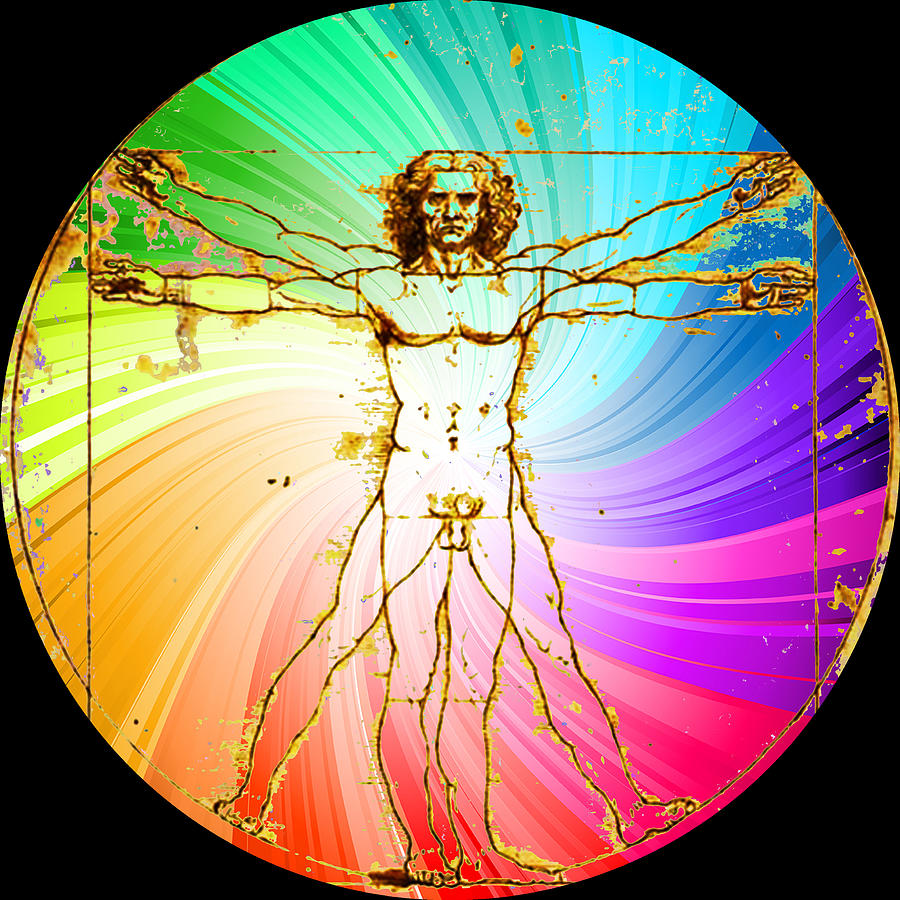
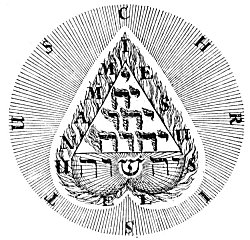
![How his body was found altogether uncorrupted after it had been buried eleven years, and how his successor in the bishopric departed this world not long after [698 A.D.] | Book 4 | Chapter 30 How his body was found altogether uncorrupted after it had been buried eleven years, and how his successor in the bishopric departed this world not long after [698 A.D.] | Book 4 | Chapter 30](https://www.gnosticwarrior.com/wp-content/plugins/contextual-related-posts/default.png)
